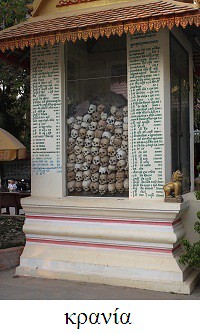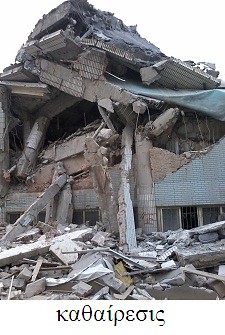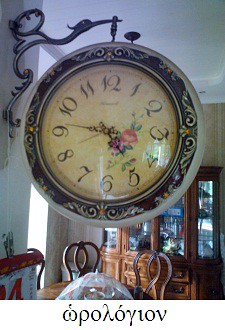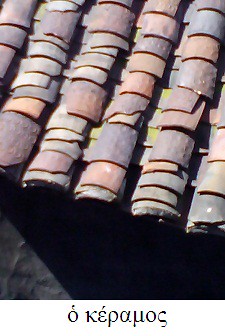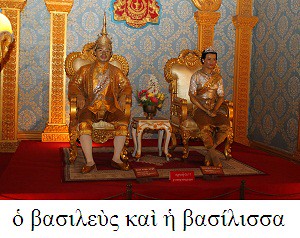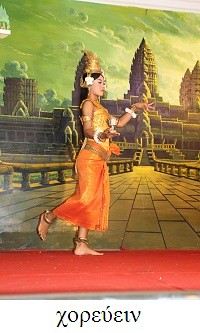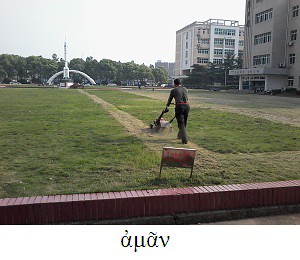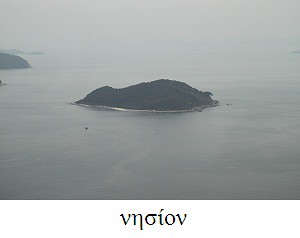Tim Evans wrote:I don't know what the [G]reek words are, and I mostly can't work out what the [G]reek words are based on looking at the pictures.
There are a number of ways of thinking about the value of pictures. As you are expecting these pictures should do, some people think that the picture should define a meaning, that is to say that you can learn Greek from a picture. In some very simple cases that is possible, I think. My main thinking with the pictures are that they are an application of existing knowledge, not new knowledge. I expect that having formed an opinion that the picture could mean a number of different things, a reference work will confirm which one of them is the one meant by the word at the bottom. Contextualisation leads to uncertainty, uncertainty to the need to resolve it and the resolution of uncertainty to contrasting probabilities / interrelated items in a picture.
I expect that using a dictionary will be used to trigger attention in the right direction, and then memorisation will be carried out by picture. For persons who know the words, from previous learning from dictionaries, word lists or reading, I expect that the pictures will be an application of knowledge to a new situation. Pictures are not a substitute for having someone explaining what you see.
If you were with me, I could do it face to face by pointing and explaining, but I'm not, so you need to look it up for starters. Markos has suggested that I write out longer descriptions on the other forum where he haunts, that together with the photos will make clear not only what is what, but also what function they serve, and what significance they have. The simplicity here has its advantages and its drawbacks. You are finding one of them, the second is that pictures give imprecise "definitions". Using them for that purpose will often leave feeling that they have come up short. According to Plato at least, the words can be used for so many similar things in so many different contexts, that only a plurality of images can ever hope to define. Hence my invitation...
Stephen Hughes wrote:If you would like to share with others the way you see things in Greek, you could join me in this thread.
Some people see Greek in the Biblical world of their faith-imagination, and could post their idea of the words to bring a different dimension to this "discussion" by images. The earlier pictures I posted about Daphnis' and Cloe's frolicking in the Spring-time, were an attempt to portray what I thought their world was like. This now is my world. Both approaches have good claim to our imagination and our use of the Greek language.
Here, posting by groups (e.g. seafood) could hint at a common theme that could be followed in understanding, but that is like being limited to cardinal directions when giving directions. The dictionary writer heard from somebody, who heard from somebody, (who heard from Photius) what the words meant, and he is handing that on to us. Language learning is not a voyage of individual discovery, it is participation on a larger whole.
Tim Evans wrote:That lawn mowing thing, is that an American thing?
I think perhaps the "thing" is a 1:10 model of a Long March 2F (神箭) rocket.
As interesting as that is, the main context of the
mowing is the
grass and the
human. The action of a human using a bladed tool on the grass that results in the grass being cut is ἀμᾶν.
Tim Evans wrote:The clock, is that the word for clock, or time of the day? etc...
The
object is the clock, the
function is to tell the time of day.
The time of day is defined by the position of the sun.
FWIW (and not very relevantly): The sun is (theoretically) currently at an angle of (angle from the 6 to the short-hand)/2 degrees above the horizon. If it was at one of the equinoxes, then according to that clock, the sun would be at an angle of about 20 degrees above the horizon in the west - clockwise is a northern hemisphere direction. If we look at the sun, with our clock in front of us looking south at the sun, then the sun rises and sets in a clockwise direction in front of us. The further north we move to the Arctic circle the closer the points of rising and setting come to each other, from due east to due west on the equator at the equinox and up to the Northern regions in summer.
